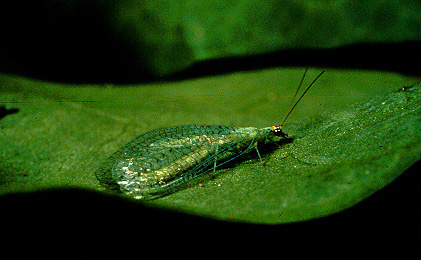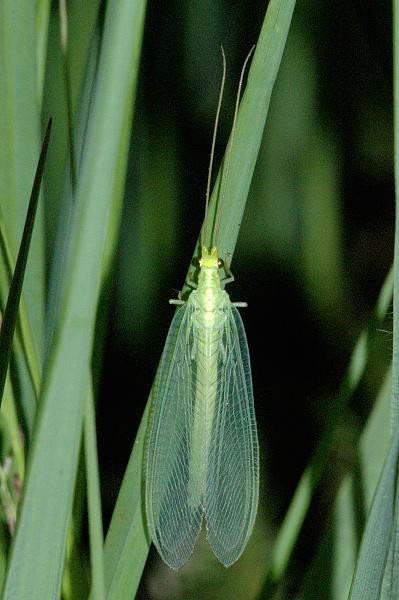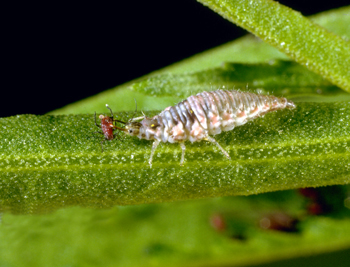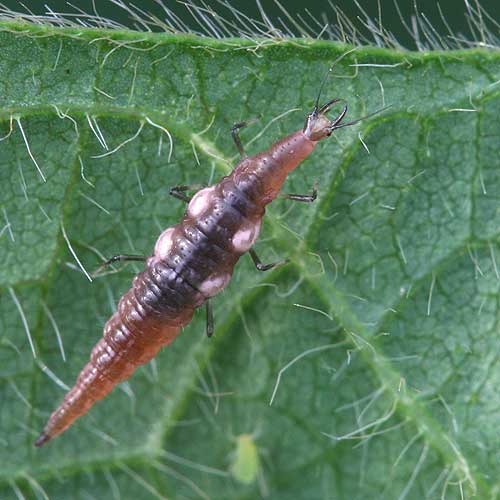LACEWINGS

Lacewings are common in North America and are considered beneficial bugs because they help to control other bugs that kill plants and flowers. Lacewings come in green and brown varieties, with the green being found most commonly in North America. They live in gardens, backyards, near woods, forests, and in fields. Gardeners buy the young lacewings (the Larvai) to live in greenhouses where they control aphids and other pests.

Adult Green lacewings are 1/2 to 3/4 inches long and are bright green as the pictures show. They have soft skinny bodies and large wings that fold over their back. Adults eat aphids and other small plant pests, but it is the larvae that are most valuable in the garden.
Green Lacewing larvae are popular with gardeners because they eat insects that destroy vegetable plants. They.eat so many aphids that they are often called, "Aphid Lions". They also eat other small insect pests like spider mites, thrips, mealybugs, leafhoppers, and pest moths. Lacewing larvae use their mouthparts to puncture bodies of prey and extract body fluids. The larvae look like tiny alligators and they act like alligators too. The will voraciously attack almost any prey they can grab. Green Lacewings can be attracted to gardens by planting pollen and nectar producing flowers.

Brown Lacewing larvae are often called Aphid Wolves although
they eat a variety of other insects besides aphids. Some eat mealybugs and other soft-bodied insects. Brown Lacewing
adults are 3/8 inch to 5/8 inch in size and are camouflaged by their
brown color. They are so well camouflaged that they can sneak up on prey
and still avoid becoming food for birds themselves.
